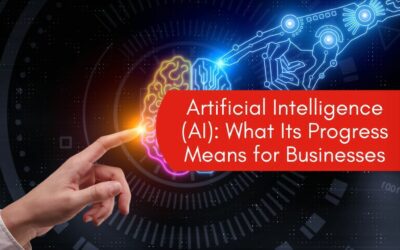We live in a customer-centric era, meaning that the most successful companies consider their audience’s needs and interests. This scope allows a business to deliver the best possible services and experiences to fulfill those needs. Thanks to rapid innovation in artificial intelligence (AI), many industries have new ways to power a better UX.
STRATEGY #1: EMOTION AI
Though AI robots can’t currently display genuine emotion the way humans do, the new field of emotion AI is still gaining ground. This field learns from people and strives to create influential AI consulting with this data. This field of technology includes:
- Analyzing data
- Facial recognition software
- Machine learning algorithms
Together, these components analyze how humans emotionally react to different parts of a company’s products, website, and marketing content. The AI then categorizes the data into emotive groups, such as “happy,” “sad,” or “angry.” You can leverage these insights to adjust a marketing strategy, identifying trends and content that promise positive engagement. Another example of this type of AI is the Affectiva car software, which can assume control of the car if it detects the driver is unfocused or angry.
STRATEGY#2: COMPLEX DATA ANALYSIS
Traditionally, user experience teams apply split testing and heat maps to boost conversions and engagement. AI will inevitably take over in this aspect because it can collect and analyze data faster than any individual or human team. Improved data collection tools offer enormous potential for UX teams; they can use deep-learning tech to track and make sense of massive datasets.
Even today, many businesses already use AI in UX in this way, learning more about how their customers behave and adjusting the site’s design to encourage specific actions. Before artificial intelligence, it wasn’t possible to analyze this kind of data quickly enough to matter. Businesses can now react in real-time and continually improve an experience.
STRATEGY #3: PERSONALIZED ADS
Though much of the user experience focuses on landing pages and the rest of the website, the first moment a brand attracts a new prospect is when the UX starts. These days, it’s more complicated than ever to grab a user’s attention in the face of information overload. Marketers need to be more creative with their approach to their campaigns.
The only way to stand out from the rest is to deliver a genuinely original effort that speaks to the client’s innermost desires; that’s where AI excels. Marketers can find a wealth of information on social media, where everyday people offer tons of data about their preferences and interests. Whenever someone likes a page, makes a comment, or visits a particular series of sites, an AI system can gather this data, define user groups, and offer personalized ads.
STRATEGY #4: AUTOMATION
In the last decade, marketing has grown dependent on automation, and this trend seems to be spreading to all other industries. Automating repetitive processes saves time, money, and effort, all of which is great for a business that wants to outsource menial duties.
In terms of the user experience, Amazon serves as a prominent example. Over a third of the retail giant’s revenue comes from personalized product recommendations that the site’s automated systems continuously optimize to encourage user engagement. High-level automatic processes can lead to disproportionate returns; you set the system once, and it increases the chance of commitment with every new visit.
IS AI A THREAT TO UX?
Based on the above strategies, it’s reasonable to wonder if AI professionals will soon eliminate the need to hire UX designers. Fortunately, there’s little reason to worry this replacement would happen anytime soon. As brilliant as artificial intelligence is now, it can’t do many things that only humans can. Chatbots still don’t offer the best customer service, and, even so, people still have to manage them. Likewise, emotion AI seems to produce exceptional results, but humans still need to make sense of the data for it to be useful.
When we think about the full user experience picture, it’s clear that AI excels at learning from data and experience but can’t yet do intricate design. The best strategy for AI is to collect behavioral data and try out new ideas. Ironic though it may seem, the truth is that companies can offer more personal experiences by embracing artificial intelligence and machine learning in UX.



